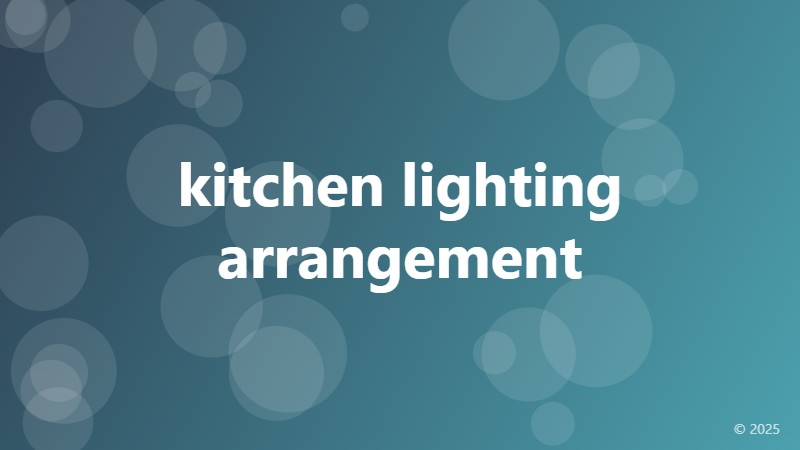kitchen lighting arrangement

Why Kitchen Lighting Arrangement Matters
Kitchen lighting arrangement is often overlooked, but it plays a crucial role in creating a functional, comfortable, and aesthetically pleasing cooking space. A well-planned lighting arrangement can make a significant difference in the overall ambiance and usability of your kitchen. In this article, we'll delve into the importance of kitchen lighting arrangement and provide you with expert tips to get it right.
Types of Kitchen Lighting
Before we dive into the arrangement aspect, it's essential to understand the different types of kitchen lighting. There are three primary types:
- Ambient lighting: Provides overall illumination to the kitchen, often through ceiling fixtures or recessed lighting.
- Task lighting: Focuses on specific areas, such as countertops, sinks, or stoves, to improve visibility and functionality.
- Accent lighting: Highlights specific design elements, like kitchen islands or display cabinets, to create visual interest.
Key Considerations for Kitchen Lighting Arrangement
When planning your kitchen lighting arrangement, consider the following factors:
- Layering: Balance ambient, task, and accent lighting to create a cohesive and functional lighting scheme.
- Color temperature: Choose bulbs with a color temperature that complements your kitchen's style and ambiance (e.g., warm white for traditional, cool white for modern).
- Lumen output: Ensure the total lumen output is sufficient for your kitchen's size and layout.
- Placement: Position light fixtures strategically to minimize shadows, glare, and hotspots.
Expert Tips for a Well-Designed Kitchen Lighting Arrangement
Here are some expert tips to help you create a well-designed kitchen lighting arrangement:
- Use under-cabinet lighting to create a warm, inviting ambiance and highlight your countertops.
- Install pendant lights above kitchen islands or peninsulas to add visual interest and task lighting.
- Add LED strips under toe kicks or inside glass-front cabinets to create a modern, sleek look.
- Consider dimming capabilities to adjust lighting levels according to your needs and preferences.
Conclusion
A well-planned kitchen lighting arrangement can elevate the functionality, comfort, and style of your cooking space. By understanding the different types of kitchen lighting and considering key factors, you can create a lighting scheme that suits your needs and preferences. Remember to layer your lighting, choose the right color temperature, and position fixtures strategically to achieve a beautiful and functional kitchen.